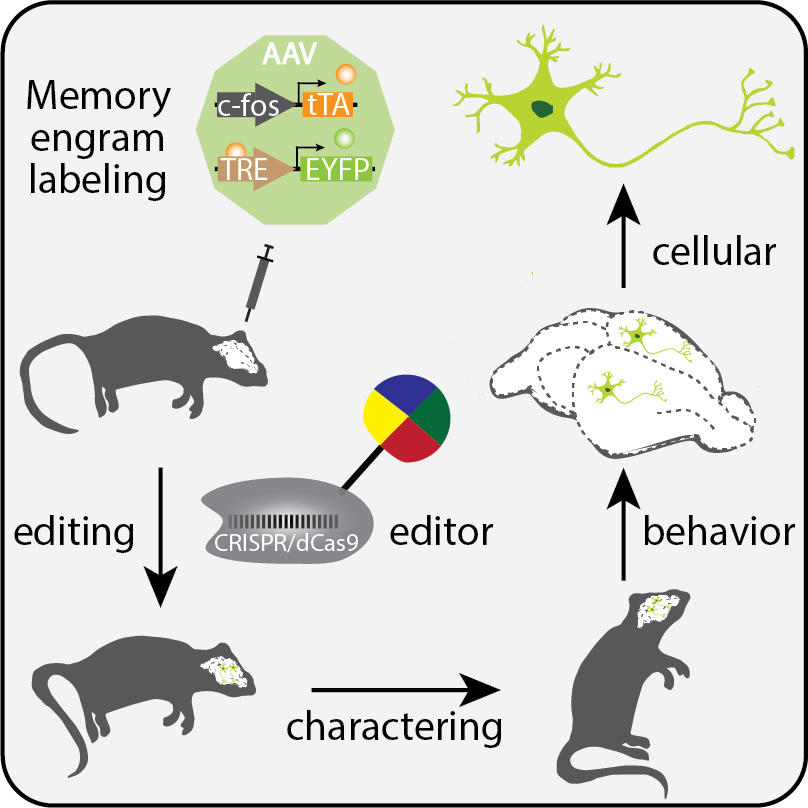Molecular Basis for Learning and Memory
Memory is fascinating as it enables time travel without Theory of Relativity. A century ago Richard Semon coined the term of engram to describe a unit of cognitive information inside the brain by which memories are stored as biophysical or biochemical changes in the brain in response to external stimuli. Regardless of this terminology, human memory can last for years, and thus the storage of long-term memory requires a self-perpetuation mechanism to overcome the relatively short half-life of most biomolecules, which range from several days to months. One provocative hypothesis is that DNA methylation contributes to the storage of memory. Indeed, DNA methylation in neurons changes during memory formation, and mutations in DNA methylation modification genes Dnmt or Tet disrupt learning and memory. However, limited insight into the neurons that encode memory made this hypothesis nearly untestable at the cellular level. Recently an activity-dependent strategy was used to successfully label a subpopulation of hippocampal neurons that can mediate memory recall in mice once reactivated by optogenetic approach (Liu et al., 2012). We are collaborating with Steve Ramirez’s group at Boston University, co-first author of this labeling work, to investigate the role of DNA methylation in learning and memory.
Ref:
Liu, X., Ramirez, S., Pang, P.T., Puryear, C.B., Govindarajan, A., Deisseroth, K., and Tonegawa, S. (2012). Optogenetic stimulation of a hippocampal engram activates fear memory recall. Nature 484, 381-385.
